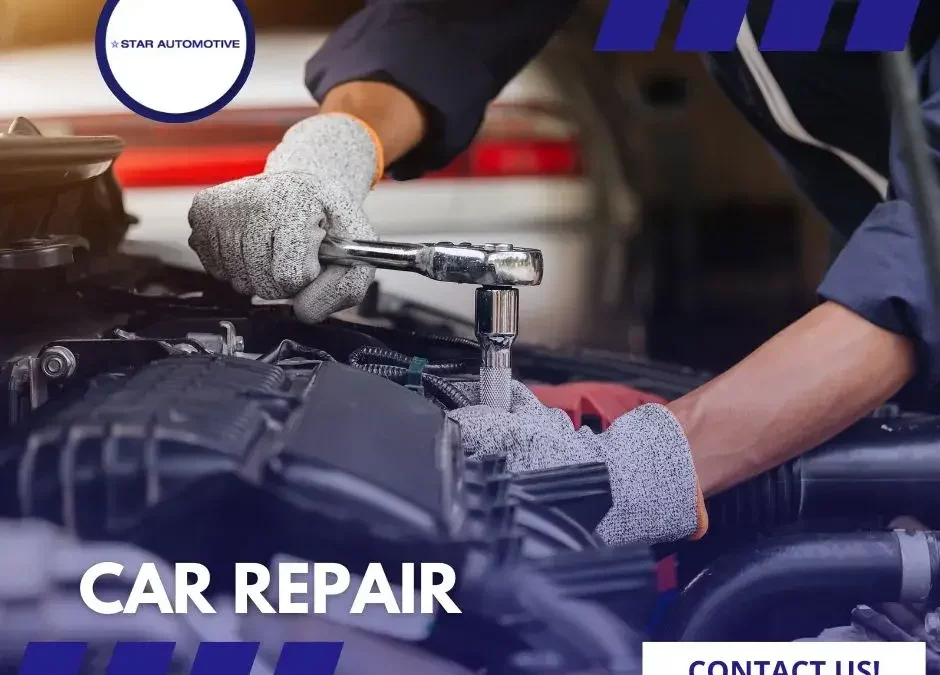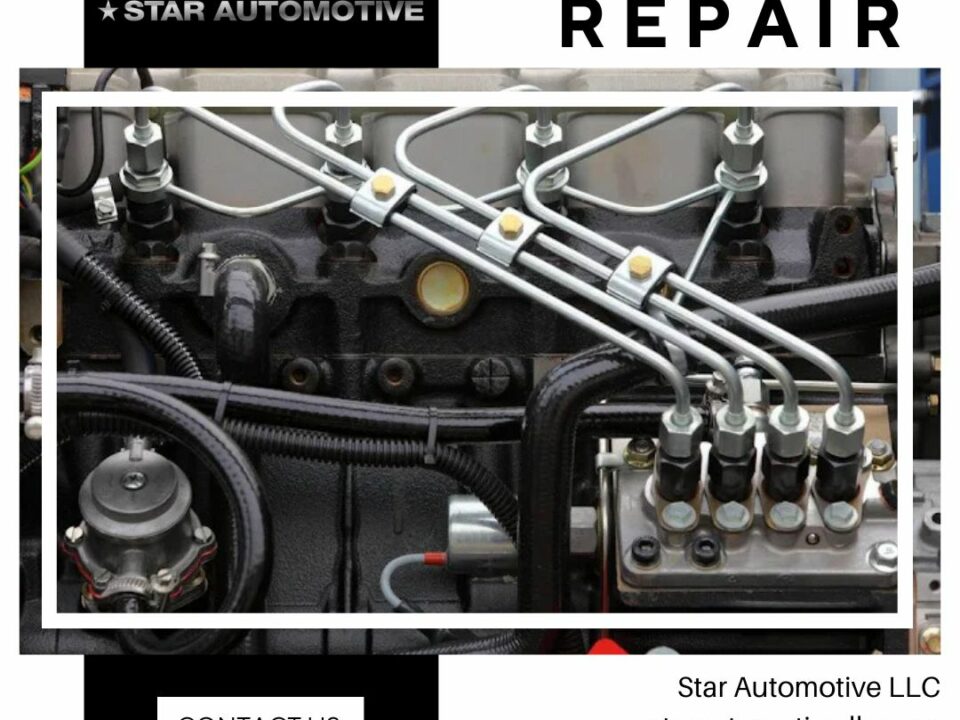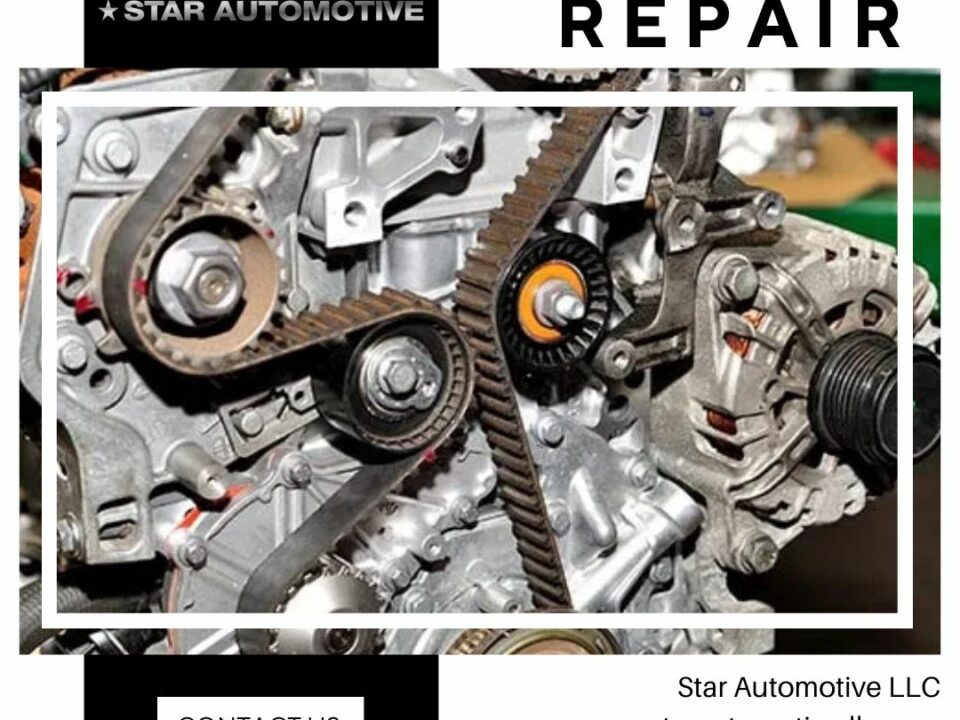
How Often Should You Repeat the Oil Change Process?
October 18, 2024
A Beginner’s Guide to Car Repair Tools: What You Really Need
November 7, 2024In the realm of home car repair, having the right tools can mean the difference between a seamless fix and a frustrating ordeal. A methodical approach to equipping your garage is essential, starting with a versatile socket set and a precision torque wrench for accuracy in tightening. Safety is paramount; thus, a reliable floor jack and secure jack stands are indispensable. A comprehensive screwdriver set complements these essentials, while a multimeter and diagnostic scanner allow for accurate troubleshooting of electrical and mechanical issues. But what completes this toolkit? Explore further to uncover the tools that transform a hobbyist into a proficient home mechanic.
Socket Set for Car Repair
How essential is a socket set in the realm of at-home car repair? The socket set serves as a fundamental component in any DIY automotive toolkit, embodying the intersection of technical precision and cultural heritage.
Historically, the act of car repair has been a rite of passage, a bonding activity amongst enthusiasts and families, symbolizing self-reliance and mechanical literacy. A well-curated socket set, with its range of sizes and drive types, facilitates tasks from basic maintenance to intricate repairs, ensuring that no bolt or nut is left unturned.
In terms of technical precision, socket sets provide the leverage and fit required to apply uniform force, minimizing the risk of damaging fasteners. The diversity within a socket set—encompassing metric and imperial sizes—caters to a wide array of vehicles, acknowledging the global nature of car manufacturing. Choosing a socket set with high-quality materials, such as chrome vanadium steel, ensures durability and longevity, allowing for a lifetime of use.
For those who seek a sense of belonging within the automotive community, mastering the use of a socket set is akin to speaking a shared language, fostering connections and facilitating collaborative endeavors in car repair.
Torque Wrench for Car Repair
A torque wrench is an indispensable tool in the realm of at-home car repair, ensuring that fasteners are tightened to the precise specifications required by manufacturers. This tool is not merely a luxury but a necessity for anyone seeking to maintain the integrity and safety of their vehicle. By applying a specific level of force, a torque wrench prevents the risk of over-tightening, which can lead to component damage, and under-tightening, which may result in loose parts and potential safety hazards.
Culturally, the torque wrench represents a commitment to precision and craftsmanship, aligning with the values of diligence and meticulousness cherished within the automotive community. It fosters a sense of belonging among enthusiasts who share a common goal of achieving excellence in vehicle maintenance.
The methodical approach to using a torque wrench involves selecting the correct torque setting, which is crucial for ensuring the longevity of automotive components. It is essential to refer to the vehicle’s service manual for the recommended torque values.
Engaging with this tool cultivates a deeper understanding of mechanical principles and enhances one’s ability to perform car repairs with confidence and competence, strengthening communal ties among fellow automotive aficionados.
Floor Jack
Among the myriad of tools essential for home car repair, the floor jack stands out as a crucial piece of equipment that facilitates safe and efficient vehicle lifting. Its robust design and hydraulic mechanism provide the foundation for secure elevation, allowing enthusiasts and professional mechanics alike to perform maintenance tasks with confidence. The floor jack’s ability to lift a vehicle’s significant weight with minimal effort underscores its importance in any automotive toolkit.
Selecting the right floor jack requires consideration of both vehicle specifications and the intended repair tasks. The jack’s lifting capacity should exceed the vehicle’s weight, while its height range must accommodate the vehicle’s ground clearance. A steel construction is often preferred for its durability, though aluminum models offer a lightweight alternative without compromising strength.
Culturally, the floor jack symbolizes a rite of passage into the world of automotive repair. Mastery of its operation fosters a sense of community and shared purpose among vehicle enthusiasts. The methodical approach to using a floor jack—positioning it correctly under the vehicle’s jacking points, ensuring stable ground, and carefully lifting—enhances the precision and reliability of the repair process. Thus, the floor jack remains indispensable for both novice and seasoned automotive practitioners.
Jack Stands
Essential to the safety and stability of vehicle maintenance, jack stands provide the necessary support once a vehicle has been elevated by a floor jack. While the floor jack lifts the vehicle, it is the jack stands that ensure the vehicle remains securely positioned, safeguarding both the individual working underneath and the vehicle itself. Acknowledging diverse automotive cultures and preferences, selecting the right jack stands is an art unto itself, requiring consideration of weight capacities and material strength to foster a sense of belonging among automotive enthusiasts.
Jack stands are indispensable for anyone serious about home car repair, and their selection should be approached with technical precision. To facilitate this process, consider the following essential aspects:
- Weight Capacity: Ensure the jack stands can support the specific weight of your vehicle. Typically, they range from 2-ton to 6-ton capacities.
- Material: Steel jack stands are common for their durability, while aluminum variants offer a lighter, yet equally robust alternative.
- Height Range: Choose stands with adjustable height settings to accommodate various vehicles and repair tasks.
- Base Design: Opt for a wide base for enhanced stability, reducing the risk of tipping during maintenance.
Understanding these factors will cultivate confidence and community among those who cherish the art of car repair.
Screwdriver Set
When it comes to assembling your toolkit for home car repair, a high-quality screwdriver set is indispensable. The screwdriver set forms the backbone of any repair initiative, offering versatility and adaptability in addressing an array of fasteners.
A comprehensive set, encompassing both Phillips and flathead variants, ensures you’re prepared for the nuanced requirements of different vehicle models and components.
Precision is paramount, and selecting screwdrivers with magnetized tips can simplify tasks, preventing the frustration of dropped screws in cramped spaces. Ergonomically designed handles are another essential feature, offering comfort and grip, which can be critical during prolonged repair sessions. This attention to detail not only enhances efficiency but also fosters a sense of professionalism, mirroring the standards upheld in automotive workshops.
Culturally, the screwdriver is more than a tool; it symbolizes the DIY ethos that resonates within automotive communities. For those passionate about car maintenance, investing in a robust screwdriver set affirms your commitment to quality and precision, creating a sense of belonging among peers who share similar values.
Pliers and Cutters
A well-rounded collection of pliers and cutters is fundamental to any home car repair toolkit, offering the dexterity and cutting capability necessary for various automotive tasks. Pliers serve as an extension of one’s hand, providing a firm grip on components that are too small or cumbersome to handle manually. Cutters, on the other hand, are indispensable for severing wires, hoses, and other materials efficiently. Together, they empower the home mechanic to execute repairs with precision and confidence, fostering a sense of belonging in the world of automotive enthusiasts.
To ensure preparedness for a range of automotive repairs, consider integrating the following pliers and cutters into your toolkit:
- Needle-nose pliers: Perfect for reaching into tight spaces and bending wires, these are essential for intricate tasks.
- Slip-joint pliers: Versatile and adjustable, they are ideal for gripping larger components and performing a variety of functions.
- Diagonal cutters: Specifically designed for cutting wires and small metal parts, they are crucial for electrical repairs.
- Locking pliers: Known for their ability to clamp and hold objects securely, these are invaluable for tasks requiring steady grip and force.
Multimeter
Leveraging the capabilities of a multimeter is crucial for any home mechanic aiming to diagnose and resolve electrical issues with precision. This versatile instrument, able to measure voltage, current, and resistance, is indispensable when tackling the complexities of a vehicle’s electrical system. Understanding its operation can demystify the labyrinth of wires and connections under the hood, providing insight into potential malfunctions.
For the home mechanic, selecting a multimeter with appropriate features is paramount. Opt for a device with both digital and analog displays, as traditional dials offer nuanced readings that digital screens may smooth over.
A multimeter equipped with auto-ranging capabilities simplifies the measurement process, automatically selecting the correct measurement range and enhancing accuracy. Safety should never be compromised; thus, ensure that the chosen multimeter is rated for automotive use, with adequate overload protection.
Moreover, mastering the use of a multimeter fosters a sense of belonging within the community of DIY automotive enthusiasts. It signifies a commitment to understanding the intricate systems that power modern vehicles. By methodically approaching each diagnostic challenge with a multimeter, the home mechanic not only gains valuable skills but also becomes an integral part of a tradition valuing self-reliance and technical mastery.
Diagnostic Scanner
Invariably, a diagnostic scanner stands as a vital tool for any home mechanic aspiring to efficiently identify and resolve vehicle malfunctions. This device bridges the gap between complex vehicular systems and the discerning enthusiast, providing critical insights into the electronic networks that govern modern automobiles. Its utility extends beyond mere fault detection, delivering a comprehensive data analysis that informs targeted interventions.
- Fault Code Retrieval: The primary function of a diagnostic scanner is to access the vehicle’s On-Board Diagnostics (OBD) system and retrieve fault codes. These codes are essential for diagnosing specific issues, allowing for precise resolution.
- Real-Time Data Monitoring: The scanner provides live data from various sensors in the vehicle, enabling the mechanic to observe conditions such as engine speed, temperature, and fuel efficiency in real-time, facilitating informed decision-making.
- Compatibility and Updates: Modern diagnostic scanners are often compatible with a wide range of vehicle makes and models. Regular updates ensure that users can access the latest diagnostic capabilities.
- Enhanced Connectivity: Many scanners offer connectivity through Bluetooth or Wi-Fi, allowing seamless integration with smartphones or tablets, thus enhancing user experience through intuitive interfaces.
For the dedicated home mechanic, a diagnostic scanner is not just a tool; it is an ally in the quest for automotive excellence.
Oil Filter Wrench
When undertaking routine vehicle maintenance, especially oil changes, the oil filter wrench emerges as an indispensable tool for the home mechanic. It offers the precision and control necessary to efficiently remove and replace oil filters, which are often situated in confined spaces within the engine bay.
The oil filter wrench is not merely a tool; it is a bridge that connects the enthusiast to the wider community of automotive aficionados who value self-reliance and technical proficiency.
Oil filter wrenches come in various forms—strap, socket, and pliers-type—each designed to accommodate different filter sizes and placements. The strap wrench, for instance, is lauded for its versatility, adapting to numerous filter diameters. Conversely, the socket-type wrench provides a snug fit, minimizing the risk of slippage, a common concern when dealing with oil-laden components.
Selecting the appropriate oil filter wrench necessitates a methodical approach, considering both the vehicle’s specifications and the user’s ergonomic preferences. This tool is an emblem of the shared knowledge and practices that bind the community of home mechanics together, reinforcing a sense of belonging through the mastery of one’s vehicle.
Work Light for Car Repair
How can a simple tool like a work light transform the efficiency of home car repairs? In the realm of automotive maintenance, optimal lighting is crucial. A work light offers precision and clarity, essential for identifying minute details and avoiding costly mistakes. This tool is not just about illumination; it enhances safety by preventing accidents, ensuring that every component is visible and accessible.
Consider the following benefits of a work light in car repairs:
- Illumination of Narrow Spaces: A quality work light can illuminate the darkest corners of an engine bay, exposing hidden problems that might otherwise be overlooked.
- Hands-free Operation: Many work lights come with magnetic bases or hooks, allowing for hands-free use. This enables the user to focus entirely on the task at hand, promoting efficiency and minimizing distraction.
- Durability and Mobility: Modern work lights are often rugged and portable, designed to withstand the demanding environment of a garage while being easily repositioned as needed.
- Energy Efficiency: LED work lights provide substantial brightness while consuming minimal energy, ensuring prolonged usage without frequent battery replacements.
For automotive enthusiasts, integrating a work light into their toolkit fosters a sense of community belonging, aligning with a shared cultural appreciation for precision and excellence in repair practices.
In the realm of home car repair, the right assemblage of tools functions as the orchestra conductor, harmonizing the complexity of vehicle maintenance. The socket set, torque wrench, and others listed, serve as the indispensable instruments facilitating precision and safety in automotive endeavors. Employing these tools ensures efficient and effective repairs, akin to a maestro leading a symphony to an impeccable crescendo. Embracing these essentials is paramount for any enthusiast seeking to master the art of vehicular care at home.




